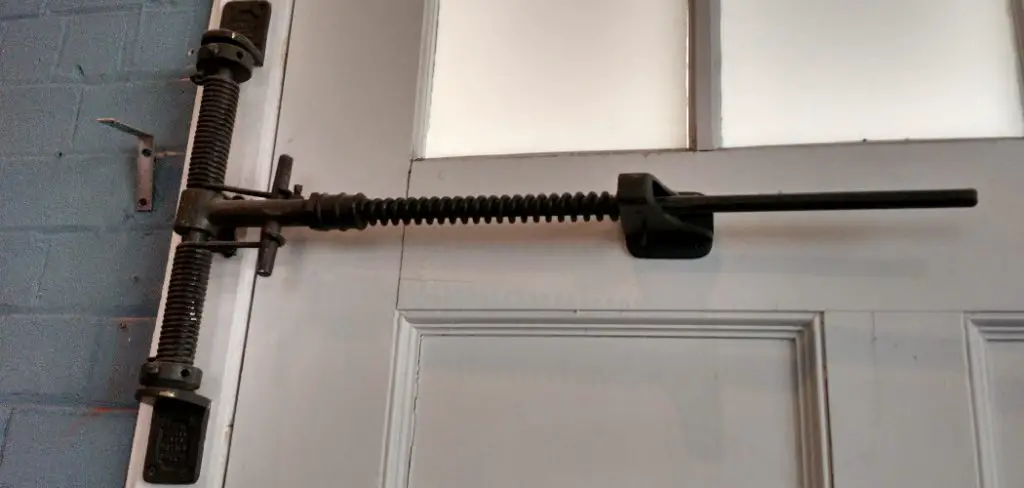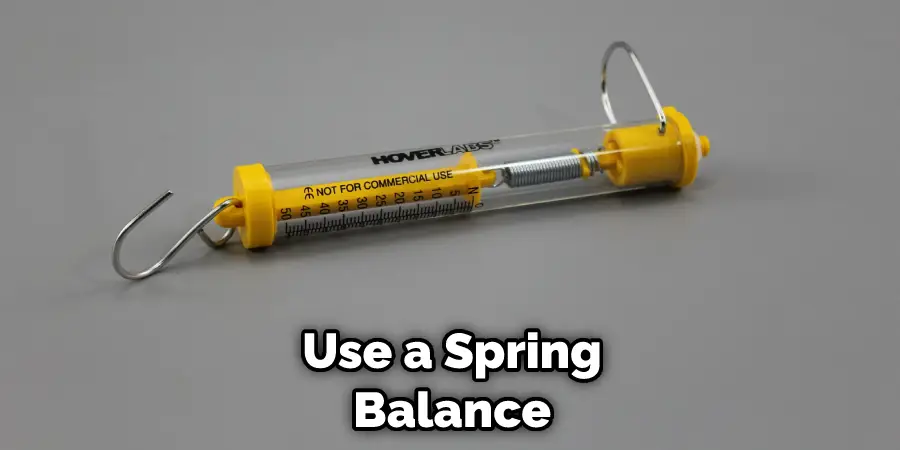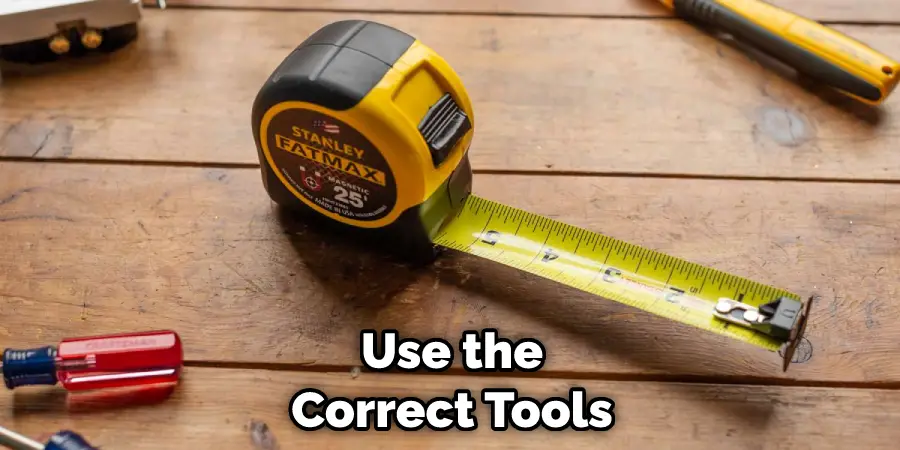If you own a garage door, you know that it is an essential part of your home’s security and convenience. While these sturdy contraptions are designed to be incredibly durable and work perfectly for years on end, most eventually succumb to the wear and tear of everyday use.

Inevitably, parts break down or malfunction, which can prevent the door from opening or closing properly–a true hassle, especially on those days when rushing to leave the house in the morning!
One type of problem commonly faced by homeowners resides with their springs. They’re integral to lifting and controlling the immense weight of a large garage door, but over time, they become weak due to continuous tension applied as doors are opened/closed without them receiving any maintenance.
If this sounds like something is affecting your home right now, keep reading–we’ll detail how to determine garage door spring weight so you can get your door back in working order again!
Why Determining Garage Door Spring Weight is Important?
As mentioned, springs are responsible for lifting and controlling the massive weight of a garage door hence determining their weight can be key to finding a suitable replacement.
While there are various types of springs available (and you should consult an expert if your spring is beyond repair), you must know what type of spring fits your needs in order to purchase the appropriate one.
Not only do different kinds of springs vary in their composition and durability, but they also come in a variety of weights as well. Depending on the size and type of garage door you have, proper spring weight is essential to ensuring that it works correctly with enough tension to lift/lower the door properly.
Things to Remember While Determining Garage Door Spring Weight
The process of determining the weight of your garage door is relatively straightforward but there are a few key points to keep in mind.
1. Don’t Repair

First, you should never attempt to repair or replace springs on your own, as these devices can be dangerous and require the expertise of professionals. It can be tempting to take matters into your own hands, but safety should always come first.
2. Measure Twice
Now that you know not to repair or replace the springs yourself, it’s time for the next step in determining the weight of your garage door springs: measuring. Carefully measure both sides of the spring and make sure that they are the same length. If they differ, it could be a sign that one is weaker than the other and should be replaced soon.
3. It’s All About the Tension
It’s important to remember that when it comes to determining the weight of your garage door springs, tension is key. Make sure that you have enough tension on the springs to ensure that your door opens and closes properly but not too much, as this could cause them to snap or break.
Required Items
- A set of scales
- A spring balance
- An assistant
5 Ways How to Determine Garage Door Spring Weight
1. Weigh the Door
The first step to determining your spring weight is to weigh your entire garage door (minus its hardware). This will give you a general idea of how much tension your springs need to apply in order for them to lift the door properly. You can use a set of scales or even a regular bathroom scale to get an accurate weight.
2. Measure the Length of Your Springs
Once you have an idea of your door’s overall weight, the next step is to measure the length of each spring. You’ll need to measure both sides as springs are often slightly different in size so make sure that they’re equal before moving on to the next step.
3. Calculate Your Needed Tension

You can now use a spring balance to calculate the tension needed in order for your garage door springs to lift and support your door. The formula is simple: take the weight of your door (minus its hardware) and multiply it by 2/3, then divide the result by the length of your springs. This will give you a number that represents the lbs/ft needed to support your door properly.
4. Install an Appropriately Sized Spring
Now that you know what tension is required for your garage door springs, you’ll need to find and install one that can provide this amount of tension. You can typically purchase garage door springs in a variety of sizes, so make sure to pick one that’s the right size for your needs.
5. Test the Spring Weight
Finally, you’ll need to test your new spring weight by opening and closing the door several times to ensure that it is providing the proper amount of tension. If you find that it’s too weak or too strong, you may need to adjust the spring weight and repeat the process until you’ve found a suitable option.
By following these steps and taking safety into consideration, you can easily determine how much your garage door springs should weigh in order to ensure that your door is operating correctly. With the right spring weight, your garage door will open and close smoothly and provide years of reliable use.
6 Safety Precautions to Follow
Garage door springs are essential for providing the proper force to lift and lower a garage door. These springs must be strong enough to support the weight of the entire garage door, which is why it can be important to know how to calculate the weight of your garage door spring.
However, this process should always be done with safety in mind. Here are 8 important safety precautions to follow when determining garage door spring weight:

- Wear protective gloves and eyewear. Gloves help protect your hands from any sharp edges of the springs, while eye protection guards against particles or debris that may be released during the measurement process.
- Loosen the holding of the garage door springs in place. An adjustable wrench or a socket set to loosen these bolts will allow you to access the springs and measure them accurately. The garage door should also be in the fully open position.
- Weigh the garage door using a scale or other weighing device. This will give you an accurate weight of the entire garage door system, including all of its components like tracks and hardware. Weighting the door will give you a baseline for calculating the weight of the springs.
- Measure the length, diameter, and size of each spring. These measurements are important factors in determining the amount of force that is needed to lift and lower your garage door. You can use this information to identify a compatible replacement spring if needed.
- Calculate the spring weight using a mathematical formula. The formula to calculate garage door spring weight is based on the length, diameter and size of the springs multiplied by approximately 8 pounds per inch. This will give you an accurate measure of each spring’s total weight capacity.
- Install new springs if needed. If your current springs do not meet the weight requirements for your garage door, you should replace them with a stronger option.
Following these safety precautions will help you accurately calculate the weight of your garage door spring, as well as ensure that it is securely installed and capable of providing the force needed to open and close your garage door.
Frequently Asked Question
How Long Will It Take to Finish the Project?
The length of time to complete the project depends on the size and weight of your garage door, as well as the number of springs you’re working with. Generally, it will take a few hours to measure and determine the weight of your garage door spring. If you are replacing a broken or damaged spring, installation times may vary based on the type of spring and its complexity.
Do I Need Special Tools or Equipment?
No, you don’t need any special tools or equipment to determine the weight of your garage door spring – only a measuring tape or ruler. However, if you are replacing a broken spring, it is important that you use the correct tools and equipment to do so safely.

Conclusion
Just follow this post on how to determine garage door spring weight to have a better understanding, determining the weight of your garage door springs is an essential part of maintaining a safe and efficient garage door system. With the right tools and some patience, the process is relatively easy.
First, identify what type of springs you have, measure their length and thickness, then use your measurements to determine the weight. Finally, use trusted resources like owner’s manuals and instruction guides to determine the exact best replacement spring for your system.
It’s important to remember that working with these components comes with its own set of risks – it’s highly recommended that a professional be consulted before attempting any DIY projects on garage door systems.
Taking care to ensure proper safety measures are observed is critical for avoiding potential hazards. Managing your garage door springs correctly can extend the life of the system for many years!
I am Rick. I grew up helping my dad with his handyman service. I learned a lot from him about how to fix things, and also about how to work hard and take care of business. These days, I’m still into fixing things- only now, I’m doing it for a living.
I’m always looking for new ways to help people grow and develop. That’s why I have created this blog to share all my experience and knowledge so
that I can help people who are interested in DIY repair.

